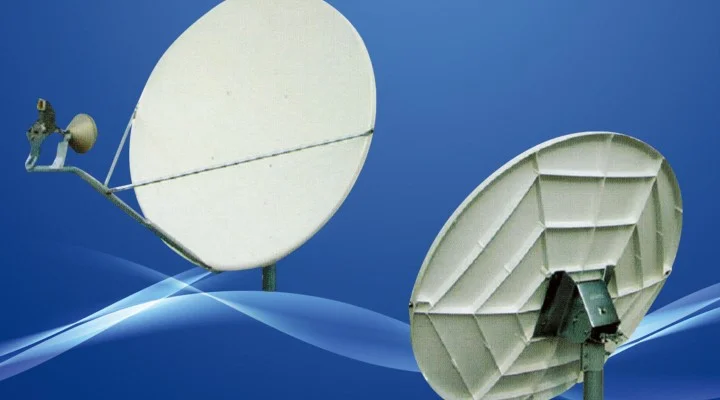Application and Development of Composite Material Satellite Antennas
With the rapid development of communication technology, satellite communication has gradually become an indispensable part of modern communication. Satellite antennas, as the core component of satellite communication systems, directly affect the quality of satellite communication. In recent years, the widespread application of composite materials has provided new opportunities for the research and manufacturing of satellite antennas. This article will explore the application background, advantages, development trends, and future technical challenges of composite material satellite antennas.
1. Background of Composite Material Satellite Antennas
Traditional materials for satellite antennas are mostly metals such as aluminum alloys and copper. These metal materials have good conductivity and mechanical strength, but their relatively heavy weight and susceptibility to environmental factors (such as corrosion and oxidation) limit the performance and application of satellite antennas. As satellite technology continues to advance, especially with the rapid development of small satellites and low Earth orbit satellites, higher demands have been placed on the weight, durability, and cost of antennas.
Due to their unique properties, composite materials have gradually become the ideal choice for satellite antennas. Composite materials generally consist of a resin matrix and reinforcing fibers (such as carbon fiber, glass fiber, etc.), and have advantages such as light weight, high strength, and corrosion resistance. Through proper design and processing, composite materials can meet the requirements of satellite antennas in various environments.

2. Advantages of Composite Material Satellite Antennas
Compared to traditional metal antennas, composite material satellite antennas have significant advantages, which are primarily reflected in the following aspects:
- Lightweight Design: The density of composite materials is much lower than that of metals, so satellite antennas made from composite materials are lighter than traditional metal antennas. This reduces the total weight during satellite launch and lowers launch costs.
- Excellent Mechanical Properties: Composite materials not only have high strength and rigidity but also possess good toughness, allowing them to effectively withstand various external forces during launch and orbital operation.
- Corrosion Resistance and Radiation Resistance: Composite materials have strong corrosion resistance, which can effectively prevent oxidation and corrosion, thereby extending the service life of the antenna. In addition, composite materials can withstand the radiation in space, ensuring long-term stable operation of the antenna.
- Good Electromagnetic Properties: Composite materials can be designed to have high electromagnetic wave permeability, which is crucial for satellite antennas and can improve signal transmission quality and efficiency.
3. Main Types of Composite Material Satellite Antennas
Currently, common types of composite material satellite antennas include carbon fiber composite antennas, glass fiber composite antennas, and polymer-based composite antennas.
- Carbon Fiber Composite Antennas: Carbon fiber has high strength and rigidity and a low density, making it an ideal material for lightweight satellite antennas.
- Glass Fiber Composite Antennas: Glass fiber is cost-effective and has good corrosion resistance and electromagnetic properties, commonly used in low-cost and small satellites.
- Polymer-Based Composite Antennas: By using high-performance resin matrices and reinforcing fibers, polymer-based composite antennas offer good temperature stability and processability, making them suitable for various satellite missions.

4. Manufacturing Process of Composite Material Satellite Antennas
The manufacturing process of composite material satellite antennas includes design, molding, post-processing and inspection, assembly, and debugging:
- Design and Modeling: First, antenna design is carried out using simulation software to predict the impact of materials and structures on antenna performance.
- Composite Material Molding: According to design requirements, molding processes such as hand lay-up and pultrusion are used.
- Post-Processing and Inspection: After molding, heat pressing, curing, and other treatments are performed to ensure the strength and stability of the antenna.
- Antenna Assembly and Debugging: Finally, precise assembly and debugging are conducted to ensure that the electrical and mechanical performance of the antenna meets the standards.
5. Future Applications of Composite Material Satellite Antennas
With the increase in low Earth orbit satellites and deep space exploration missions, the application prospects of composite material satellite antennas are broad, especially in the following areas, where they have significant potential:
- Low Earth Orbit Satellite Communication: Composite material satellite antennas, with their lightweight and high-strength features, are highly suitable for low Earth orbit satellite communication systems.
- Deep Space Exploration: Deep space exploration missions require extremely high stability and durability for antennas, and composite materials can meet these high standards.
- Military and Emergency Communication: In military and emergency communication fields, composite material satellite antennas can provide high-strength, extreme environment-resistant communication support.
6. Conclusion
As a new type of high-performance antenna, composite material satellite antennas, with their advantages of lightweight, corrosion resistance, and radiation resistance, are becoming key components in modern satellite communication systems. With the continuous progress of materials science and manufacturing technology, the performance of composite material satellite antennas will become even more superior, and their application fields will continue to expand. In the future, composite material satellite antennas will play a significant role in low Earth orbit satellites, deep space exploration, military communication, and other areas, driving the development of global communication technology.